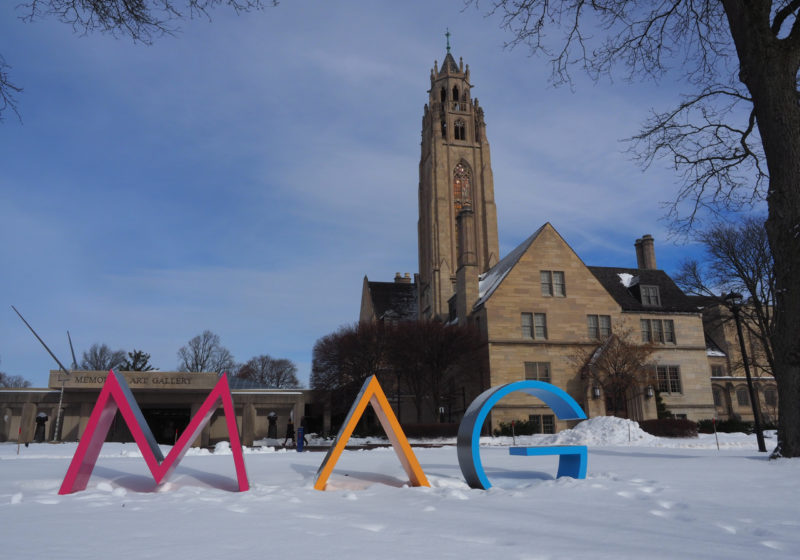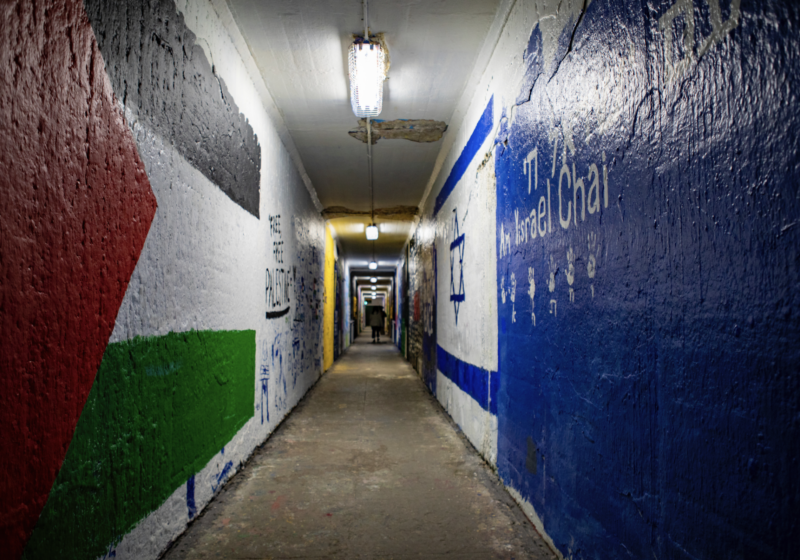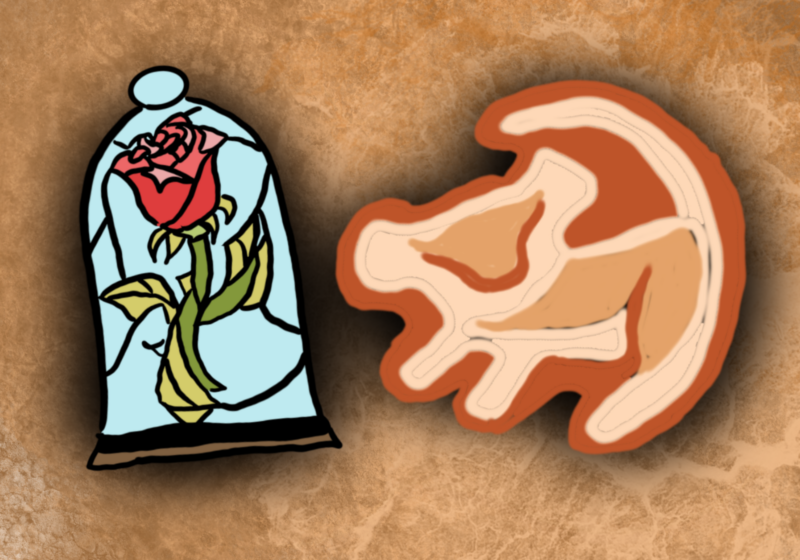The Memorial Art Gallery (MAG) has been a staple in my life since my first visit there on a middle school field trip. Since then, I’ve gone a few times every year, each time paying the $11 student admission price. When I became a student at UR, I was glad to find out that I no longer needed to purchase tickets for entry, but I still hadn’t found the time to pay my beloved gallery a visit until winter break.
This last visit was my favorite yet. While the MAG’s permanent collection is beautiful and rich with history, the current exhibitions give the MAG a necessary contemporary update. If you have the chance, please go visit. It’s free, after all.
Dawgs (Aug. 15, 2021 – August 2022)
On the Hurlbut Gallery walls, you can view “Dawgs,” a bright pastel mural by the Rochester-based artist, SALUT. Its depictions include cartoony dogs and strangely shaped humans, but what most draws the eye to this piece is the color palette, which reminded me of candy and melting ice cream. It looked like how experiencing summer as a child feels, especially with the art style having a similar feel as cartoons like “Adventure Time” and “Flapjack.” It’s a perfect mural to stand in front of for a cute little photoshoot. Just remember to turn your flash off!
Chitra Ganesh: Sultana’s Dream (Dec. 17, 2021 – June 5, 2022)
On my visit, I was especially excited to view “Sultana’s Dream.” I had known it was based on the story by the Bengali writer Rokeya Sakhawat Hossain, and as a Bengali-American, I had never seen American art based around Bengali culture. I wondered how it would portray Bengali aesthetics. Chitra Ganesh, an Indian-American Brooklyn-based artist, did an excellent job at vividly and vibrantly displaying Bengali aesthetics despite her prints all being in black ink.
Ganesh produced 27 linoleum prints every day, beginning on Dec. 3, 2019 and ending on Dec. 29 of the same year. Each and every print is dreamy and bold, illustrating the story’s feminist utopia beautifully. The depictions of the architecture and nature perfectly captured historic Bangladesh. They were identical to glimpses I had caught when visiting Bengali palaces and museums in my youth. In addition, the feminist twist to that history was especially eye-catching. The women were powerful and were depicted as dripping with magic and wonder.
Ganesh claims that though the exhibition is imaginative and otherworldly, the pieces address contemporary issues such as “apocalyptic environmental disaster, the disturbing persistence of gender-based inequality, the power of the wealthy few against the economic struggles of the majority, and ongoing geopolitical conflicts that cause widespread death and suffering.” These issues are woven into her depiction of a utopia with subtlety and tact. Ultimately, the exhibition leaves one feeling hopeful.
The exhibition takes up the entirety of the MAG’s Lockhart Gallery but a digital exhibition can be found here on the MAG’s website. If you can’t check it out in person, please do check it out digitally.
National Anthem (Nov. 26, 2021 – Aug. 14, 2022)
The first new collection I came across has stuck with me the longest — “National Anthem,” by the Japanese-German American artist Kota Ezawa. This exhibition follows the trend of Ezawa’s past artworks, grappling with newsworthy moments in American pop culture in depictions of flat watercolor. In the past, he has done pieces on the assassinations of presidents Abraham Lincoln and John F. Kennedy, as well as the O.J. Simpson trial.
Before you even enter the gallery, you can hear the faint notes of “The Star-Spangled Banner.” This instrumental track is the soundtrack of his centerpiece, a video animated with watercolor images of NFL athletes “taking a knee” on the field. This method of peaceful protest was popularized by former San Francisco 49ers quarterback, Colin Kaepernick, as a response to the violence and oppression endured by African-Americans in the US. It became deeply controversial, with Kaepernick taking flack from major conservative politicians and news outlets. Players who “took a knee” were deemed un-American.
This installation also includes two lightboxes and an original watercolor painting, both of which show players kneeling during the national anthem. The images were based on live camera footage. Each facet of the exhibition is tied together by Ezawa’s distinctive flat-two dimensional style, which allows the viewer to focus more on the subject matter than on the artistic merit of the piece. It’s a powerful exhibit, especially displayed here in Rochester, a city that has failed to receive justice for the murder of Daniel Prude.






